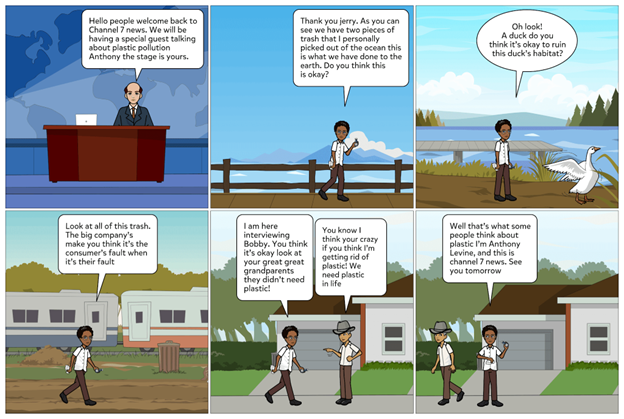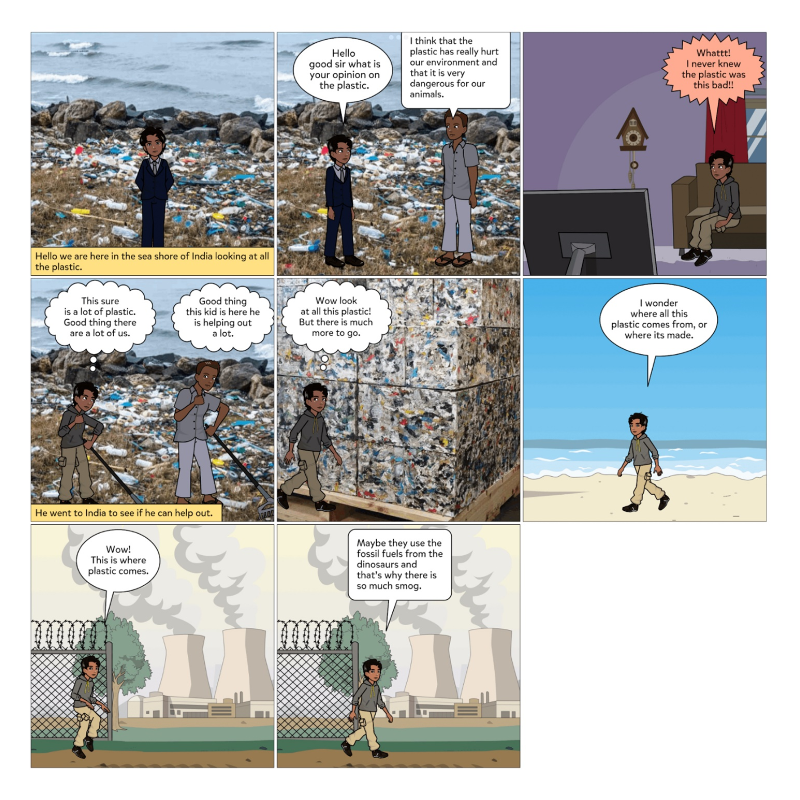Putting yourself into the shoes of The Story of Plastic heroes: Educator Spotlight on Melissa Zaucha
Wayfinder Society is for environmental educators who believe in the power of collective action. It is an online platform hosting a robust offering of classroom and teaching resources that makes it easy for educators to create a fun, dynamic, and engaging classroom and to inspire their students through environmental awareness and action. Every other month, we highlight an educator in our network.

Ms. Zaucha currently teaches a 5/6 grade combo class in Fullerton, CA. We asked her some questions about how she incorporates environmental education in her classroom, and we summarized our conversation below.
Q: How do you incorporate plastic pollution into your curriculum?
A: It all started with ordering the Plastic Ocean teaching kit which she discovered on Algalita’s website about 8 years ago which she’s been using ever since. Now, with access to the Story of Plastic documentary, she begins her plastic unit by first screening the 90-minute film over 3 class periods. She uses the Stop & Jot worksheet and discussion questions provided in the Wayfinder Society toolkit Story of Plastic Documentary Classroom Screening Guide to help students process their emotional reactions and the film content.
Doing the Plastic Ocean kit after watching the film added the emotional element and contextual meaning to the kit content. It helped students understand the significance of what it means for plastics to be a major ocean pollutant. Ms. Zaucha said that observing the vials with the ocean water samples was so impactful after seeing the scene in the documentary where Algalita was collecting samples from the same region in the North Pacific Gyre. They asked: “Is this from the movie?!”
The third piece of Ms. Zaucha’s plastic pollution unit was for students to create a comic strip about what they learned over the week, incorporating at least one quote from the documentary. They use the program Pixton throughout the school year, creating their own avatars to use in their comics. See a couple examples of the student’s comic strips below. What a cool way to reflect and process a challenging topic!

One example of the comic strips created by Ms. Zaucha’s students for the unit on plastic pollution.

One example of the comic strips created by Ms. Zaucha’s students for the unit on plastic pollution.
Q: What are some realizations and take-aways that your students have had from this unit?
A: Ms. Zaucha shared that her students were able to understand the injustice that permeates the global waste trade through the experience of watching The Story of Plastic. She said her students were able to put themselves in the shoes of the families living in Southeast Asia, where heaps of plastic films are piled in front of workers homes to be processed by hand, most of which aren’t recyclable at all, and which often end up burning in open fields, causing intense air pollution. They also drew further connections to the systemic inequities in their home country – pointing out that the top-level decision makers at plastic production companies shown in the film were all white men.
Q: What motivates you to incorporate environmental education in your classroom?
A: Ms. Zaucha shared that during her years teaching in Compton, she was appalled by the fact that there was an oil refinery directly adjacent to her school. They would often have to keep students indoors due to bad air quality or would have to call the refinery to pause their operations because students were in PE class. She knew that this was only something that would only happen in a low-income, minority area.
When she heard reports about plastic pollution on the radio, she felt compelled to take action. But she also felt frustrated that it was so challenging to avoid plastic, and particularly plastic packaging, in her everyday life. So, she decided that she’d contribute by teaching about these issues in her classroom.
With this unit, she’s able to bridge together many of the issues that impact the communities she teaches in and lives in. The Story of Plastic film does an incredible job weaving together the issues of plastic pollution, climate change, and environmental justice, highlighting how they are so interconnected. With some of her students coming from those exact communities burdened by fossil fuel extraction and the many industries that derive from it, this unit on plastic pollution is relatable and close to home for them.
Thank you Ms. Zaucha for bringing this conversation into your classroom, and for working towards a better future for your students and your community.
